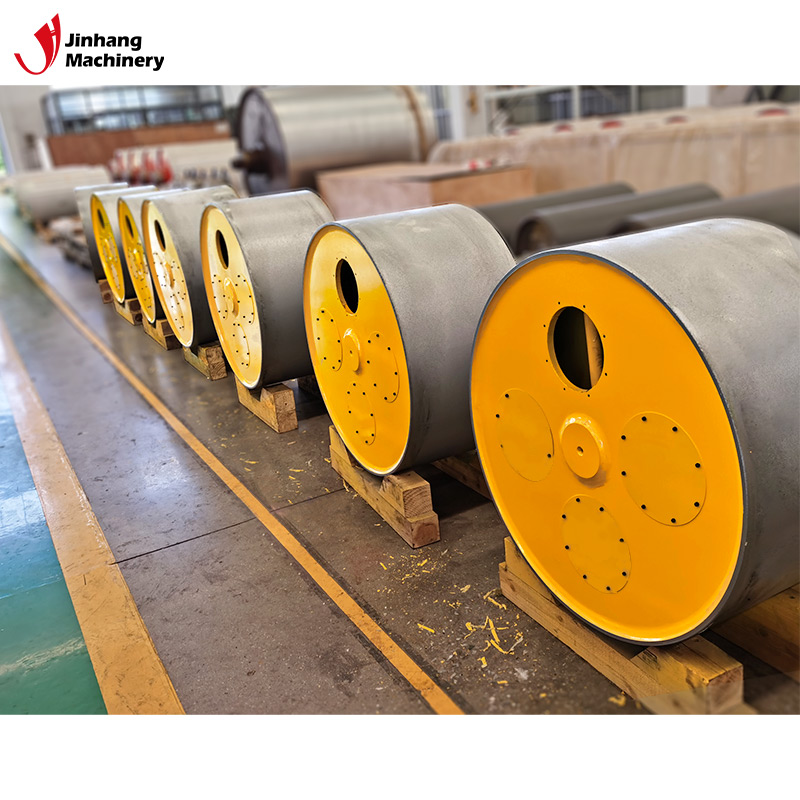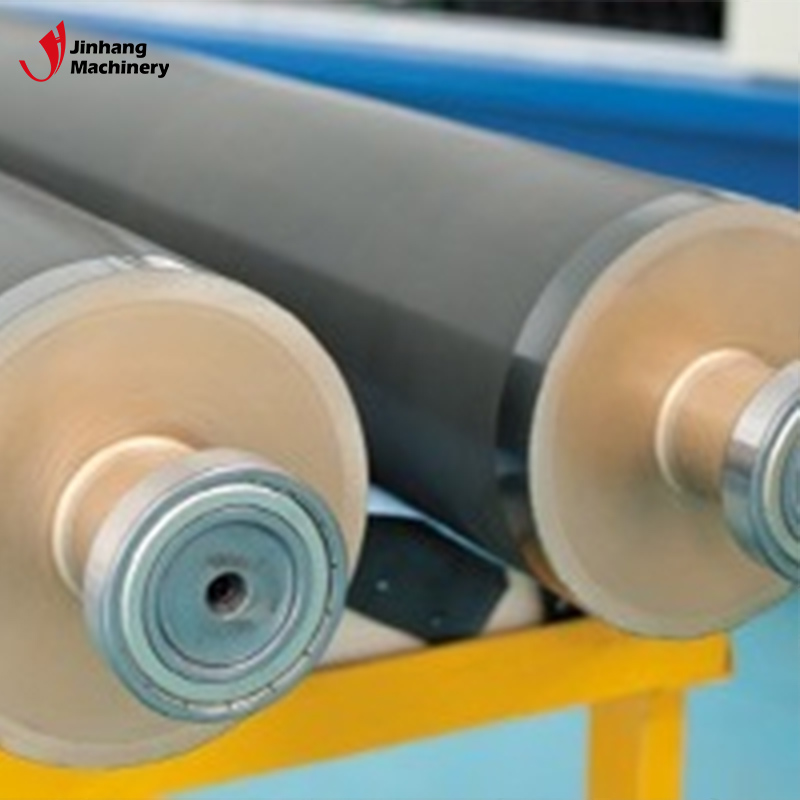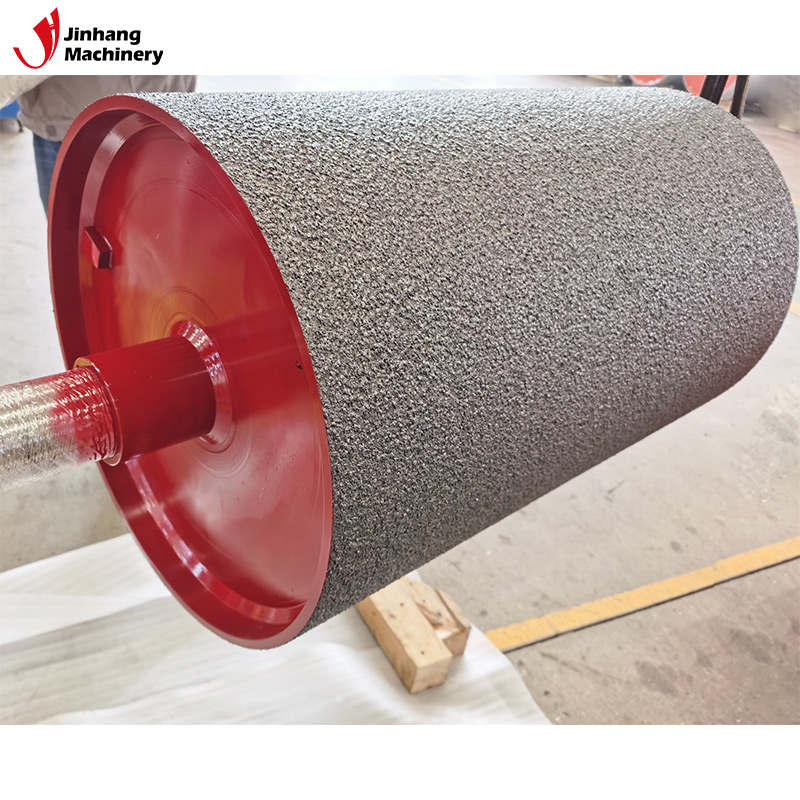What are the cell types of ceramic anilox roller?
As a key equipment in industrial production, ceramic anilox roller is widely used in printing, coating, packaging and other fields. Its unique structural design and material properties make it play an important role in fine liquid transfer and coating processes. In the design of ceramic anilox roller, the cell (i.e., the tiny grooves on the surface of the roller) is its key component, which directly affects the uniformity of liquid transfer, the accuracy of coating and the use effect of the material.
So, what are the cell types of ceramic anilox roller? How do these different types of cells affect its performance and application? This article will focus on this topic and explore the cell types of ceramic anilox roller and their working principles.

What are the cells of ceramic anilox roller?
The cells are tiny grooves on the surface of ceramic anilox roller, through which the anilox roller can capture, store and transfer liquids or coatings. Different cell designs have a vital impact on different types of liquids, viscosities and coating process requirements. The shape, depth, size and distribution pattern of the cells determine the coating amount, uniformity and efficiency of the anilox roller. Therefore, understanding the types of cells and their working principles of ceramic anilox rollers is the basis for ensuring production process optimization and improving product quality.

What are the types of cells of ceramic anilox rollers?
The main types of cells of ceramic anilox rollers:
1. Diamond Pattern
2. Hexagonal Pattern
3. Square Pattern
4. Cellular Pattern
5. Pyramidal Pattern
6. Grooved Pattern
Depending on the design and processing technology of the ceramic anilox roller surface, the cells usually have different shapes and distribution methods, and each type of cell is suitable for specific processes and application scenarios. The following are several common types of ceramic anilox roller cells:
Diamond Pattern
Diamond cells are one of the most common cell designs in ceramic anilox rollers. This type of cell has a regular geometric shape and is usually arranged in a continuous diamond pattern. The main feature of the diamond cell is that its mesh structure can accurately control the storage and transfer volume of the liquid.
● Features: The diamond cell design is simple, and the liquid flow path is relatively smooth. It is suitable for handling liquids with low viscosity and can ensure uniformity during the coating process.
● Applicable scenarios: It is suitable for the transfer of low-viscosity liquids such as inks and adhesives, especially in printing and film coating. The diamond cell provides good coating uniformity.
Hexagonal Pattern
Hexagonal cells are a high-precision and efficient cell design, which is generally considered to be one of the ceramic anilox rollers with higher liquid transfer efficiency. The hexagonal arrangement allows the liquid to be more evenly distributed during the coating process.
● Features: Hexagonal cells have a high liquid storage capacity and small gaps between cells, which can minimize liquid loss. During the coating process, the hexagonal structure can ensure the stable release of liquid and is suitable for processes that require highly uniform coatings.
● Applicable scenarios: Hexagonal cells are often used for coating of high-viscosity coatings, adhesives, and thick film materials, especially in precision coating and high-demand printing applications.
Square Cells
The structure of square cells presents a regular rectangular or square arrangement, and liquids are stored and transferred in these square grooves. The advantage of square cells is that their liquid transfer volume is relatively stable and can adapt to different types of liquids and coating processes.
● Features: The design of square cells ensures the consistency of the liquid volume in each cell, thereby ensuring that the liquid maintains a stable flow rate during the coating process. Compared with other cell types, square cells are relatively simple to manufacture and process, so the cost is lower.
● Applicable scenarios: Suitable for various coating processes, especially those applications that require high liquid transfer accuracy, such as the coating of packaging materials and plastic films.
Cellular Pattern
The design of the circular ceramic anilox roller cell structure makes the transfer amount and fluidity of the liquid in the cell relatively balanced. Compared with square cells and diamond cells, circular cells have better liquid self-leveling performance, so they are very suitable for applications that require higher fluidity.
● Features: The circular cell structure reduces the possibility of liquid accumulation during the coating process and is suitable for processing low to medium viscosity liquids. Its design is simple and the cells are evenly distributed, which can effectively reduce defects during the coating process.
● Applicable scenarios: It is suitable for the coating process of medium viscosity liquids, such as water-based paints, glues, etc., and is particularly suitable for applications that require uniform liquid coating.
Pyramidal Pattern
The design of the pyramidal ceramic anilox roller cell is inspired by the three-dimensional pyramid structure. Liquids can be stored in these grooves and effectively released through the coating process. Due to the pyramidal geometry, the cells can accommodate more liquids, so they are suitable for high viscosity liquid transfer.
● Features: The pyramid-shaped cell has a large liquid storage capacity, and its tip structure can achieve precise release during the liquid coating process, reducing the accumulation of liquid on the surface of the substrate. It is suitable for high-viscosity materials and can ensure the efficiency of the coating process.
● Applicable scenarios: Commonly used to handle the transfer of high-viscosity coatings, adhesives or resin materials, suitable for processes that require thick coatings.
Grooved Pattern
The grooved ceramic anilox roller cell is a cell design composed of a series of parallel grooves. This design is mainly used for rapid liquid transfer. The grooved cell has a large liquid transfer capacity, and its design can help the liquid spread evenly on the substrate quickly.
● Features: The grooved cell is suitable for handling large-area coating needs and can quickly complete the liquid transfer work. It has a high transfer efficiency and is particularly suitable for processes that require high coating speeds.
● Applicable scenarios: Commonly used in large-scale coating processes, such as large-format printing, film coating and textile coating processing, the design of the grooved cell can greatly improve production efficiency.

What is the effect of different cell types on coating effect?
Different cell types determine the coating effect of ceramic anilox roller in specific applications. Influencing factors include liquid storage capacity, transfer volume, uniformity, etc. Choosing the right cell type can not only improve production efficiency, but also ensure coating quality.
Liquid storage and release capacity
The depth and shape of the ceramic anilox roller cell directly affect the storage volume and release speed of the liquid. Deeper cells (such as pyramid cells) are suitable for storing more liquid and are suitable for high-viscosity liquids; while shallow cells (such as square or round cells) are suitable for processing low-viscosity liquids and can achieve faster release.
Coating uniformity
The arrangement of ceramic anilox roller cells also affects the uniformity of coating. Hexagonal and diamond cells usually provide more uniform coating effects due to their regular arrangement, while slot cells are suitable for large-area rapid coating, but are relatively weak in precision.
Wear resistance and service life
Since ceramic anilox roller uses high-hardness ceramic materials, the mesh design should not only consider the liquid transfer capacity but also the wear resistance of the mesh. Although the more complex mesh structure (such as pyramid mesh) has a good transfer effect, its surface is easy to wear in long-term use, so regular maintenance is required. Simple mesh design (such as square and round mesh) has a longer service life.

How to choose the right mesh type?
When choosing the mesh type of ceramic anilox roller, it is necessary to comprehensively consider the process requirements, the characteristics of the liquid, and the accuracy requirements of the coating. Enterprises should determine the right mesh type based on factors such as the type of liquid used in actual production, viscosity, coating thickness, etc. In addition, the parameters of the coating equipment (such as pressure, speed, etc.) will also affect the selection of mesh type.
